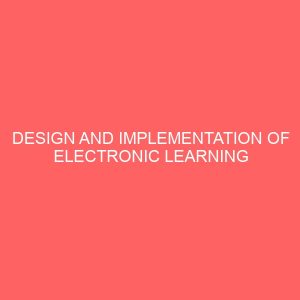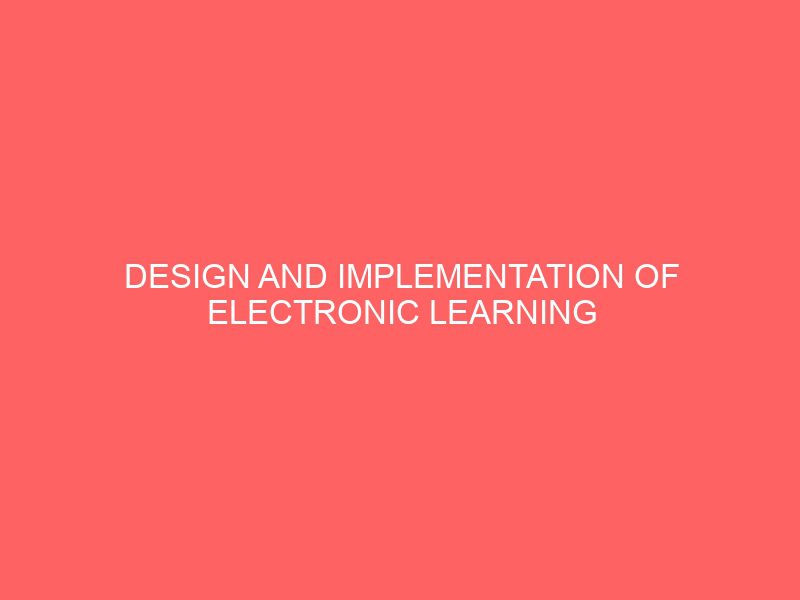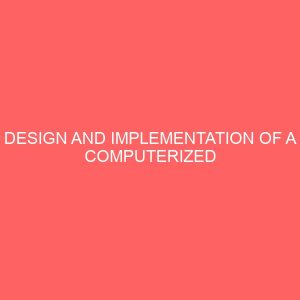Description
CHAPTER ONE
1.0 INTRODUCTION
E-learning refers to the use of various kinds of electronic media and information and communication technologies ICT in education. E-learning is an inclusive terminology that encompasses all forms of educational technology that electronically or technologically support learning and teaching. Depending on whether a particular aspect, component or delivery method is given emphasis, e-learning may be termed technology enhanced learning TEL, computer based training CBT, internet based training IBT, web based training WBT, online education, virtual education, or digital educational collaboration.
E-learning includes numerous types of media that deliver text, audio, images, animation, and streaming video, and includes technology applications and processes such as audio or video tape, satellite TV, CDROM, and computer based learning, as well as local intranet/extranet and web based learning. Information and communication systems, whether freestanding or based on either local networks or the Internet in networked learning, underlay many e-learning processes.
1.1 Background of study
E-learning is an inclusive terminology for all forms of educational technology that electronically or technologically support learning and teaching. Bernard Luskin advocates that the e should be interpreted to mean exciting, energetic, enthusiastic, emotional, extended, excellent, and educational in addition to electronic. This broad interpretation focuses on new applications and developments, and also brings learning and media psychology into consideration.
1.2 Statement of the study
Student in tertiary institution suffers a lot of setback in external exams due to the type of teaching system which they receive. They don’t have access to the internet and lack knowledge of what is obtainable in the society.
1.3 Aims and objectives
1. To facilitate the development of information technology
2. To reveal the use and technology of wireless network to the user.
3. To provide alternative way of attaining education
4. To implement a system which reduce examination mal practice
1.4 Significance of the study
E-learning provides benefit for the organizations and individuals involved it reduces the cost of learning, examination and result processing institutions, it create access thereby enables people from any part of the world to be educated E-learning also functions in improving standard of education which Helps to eliminate inadequate like examination malpractice.
1.5 Scope of the study
Design and implementation of e learning A case study of computer Science and information and technology, caritas university Enugu, this project is a tutorial and design with VB








Reviews
There are no reviews yet.